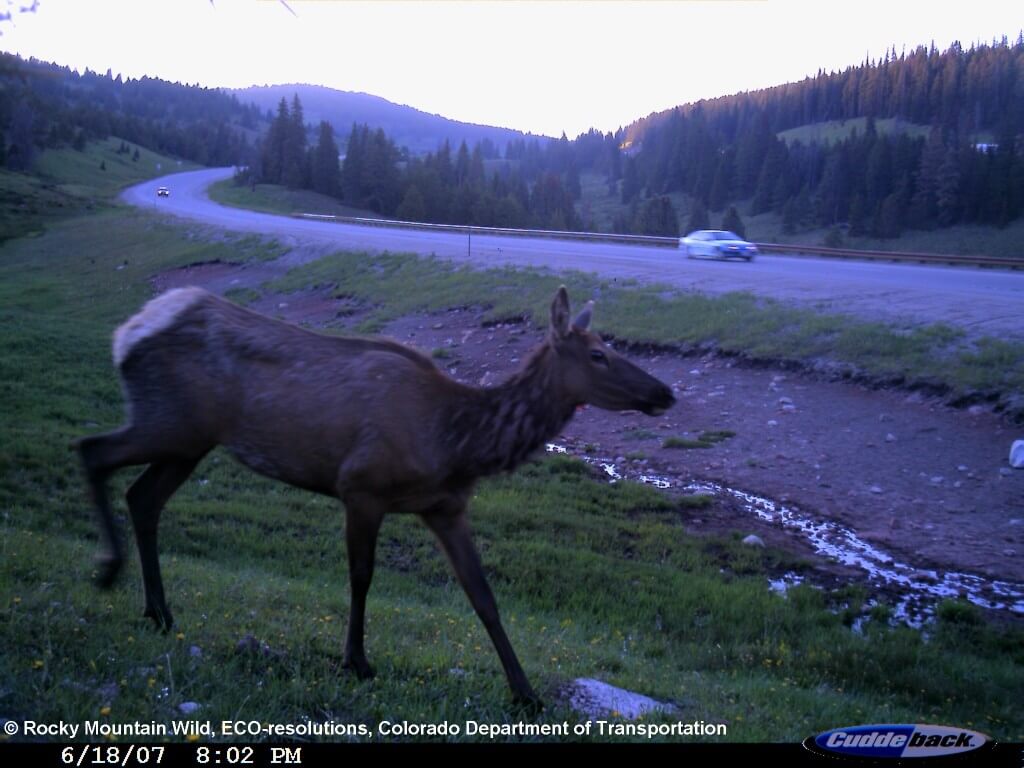By Paige Singer
Habitat Connectivity Program Director
Rocky Mountain Wild, WILD and other partners continue to forge ahead in cooperation with the Colorado Department of Transportation to bring you the first-ever wildlife overpass across Interstate 70. This cooperative effort requires the expertise of everyone, from our collective staff of biologists, advocates and educators to CDOT engineers and traffic analysts. Back at the beginning of the summer, we got together on a sunny morning on the side of the highway to look at exactly where such a structure should go.
While there are several places along the I-70 Mountain Corridor where a wildlife overpass would be the ideal crossing structure to alleviate the pressure the highway puts on migrating wildlife, we are working hard to determine the best location for this first project. Our intention is that this overpass will eventually be just one of many crossing structures built both over and under I-70 to begin reestablishing a system of connectivity for wildlife on the move across the state.
During the two years I spent in the field for Rocky Mountain Wild’s recently completed I-70 Eco-Logical Project, I assessed the entire stretch of I-70 from Golden to Glenwood Canyon, including making a visit to every bridge and culvert, from the perspective of an animal trying to get across the busy interstate highway. On our field visit to two of the finalist locations for the wildlife bridge, we caught a glimpse of the highway through the eyes of the engineers and other environmental specialists from CDOT and their affiliates. In my mind, certain locations would be good for a wildlife crossing structure for a variety of biological and practical reasons, be it a natural drainage drawing wildlife toward the highway or an existing structure that could potentially be retrofitted to accommodate traveling animals. The engineers and other specialists were applying their own set of criteria, things I had not been trained to consider before, such as the stability of the ground and whether the location would be susceptible to a landslide. The Rocky Mountain Wild team was also able to consider the selling points of each location for the public, which spot would be easiest to raise money for and where a vegetated overpass would tell an immediate story to drivers going under it. CDOT’s engineers and others learned from us, and we definitely learned from them.
Before visiting the field together, it seemed like getting our criteria for the perfect location down on paper was the most important first step. But during the site visit, it quickly became evident that bringing together these varying viewpoints for the day was just as vital to the selection process. After all, this first project needs to be done just right to provide the necessary momentum for our vision to be realized of a fully reconnected state north and south of the highway. And working hand in hand to advance that vision with the folks who have to worry about our safety on the highway every day is about sharing our respective expertise and appreciating how much the right solutions in the right places can benefit both wildlife and drivers.


